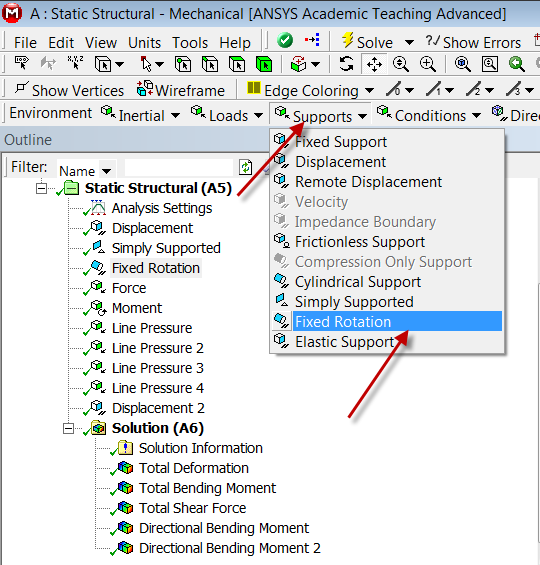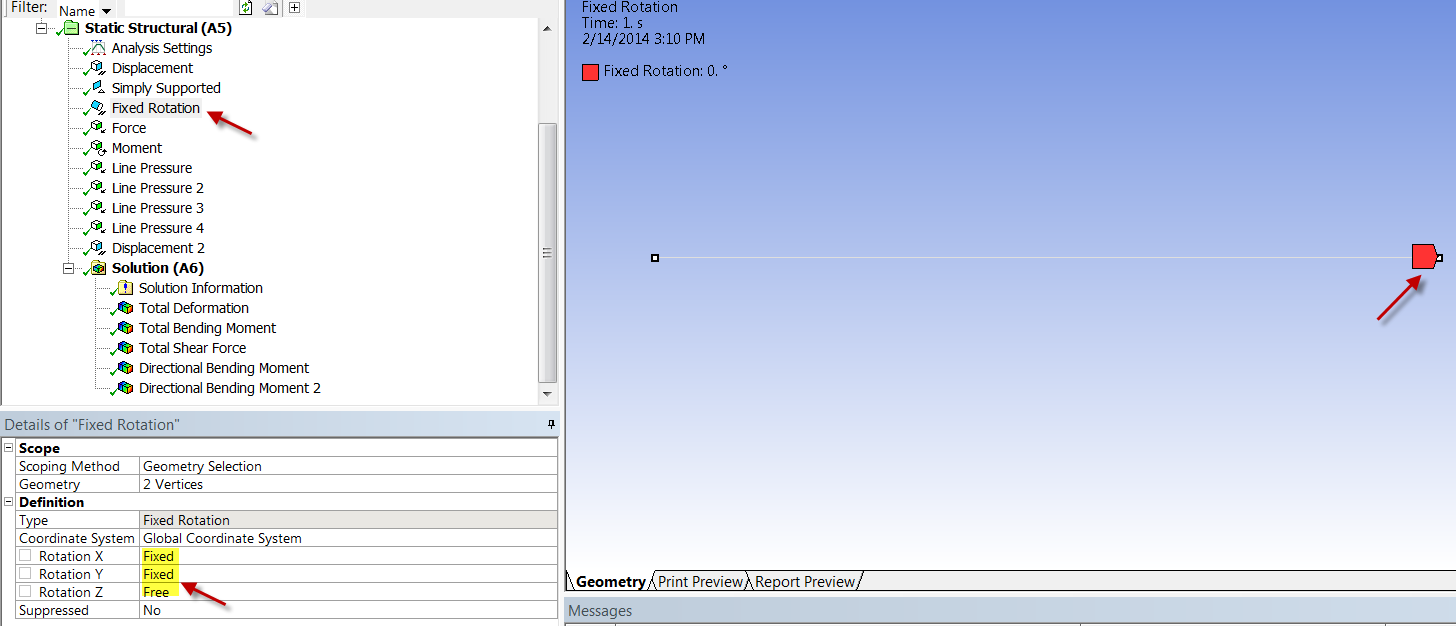...
- In ANSYS, you need to specify E and I separately. You can pick them independently as long as you get the desired EI. You specify I by specifying the cross-section as we saw in the preceding tutorial. To keep things simple, just pick a square cross-section as in the tutorial. Keep the cross-section dimensions small compared to the beam length to get a slender beam. ANSYS uses the Timoshenko beam formulation which is more general than the Euler-Bernoulli formulation. The difference between the two formulations becomes significant only when the beam is non-slender.
- Model the geometry using four lines. You will need to have vertices where you will be applying forces, moments or displacement constraints.
- Apply a distributed load using Line Pressure as shown above.
- Apply the simply supported constraints using Supports > Displacement. For example, the settings in the figure below can be used to apply the simply supported constraint at A or C. Note that ANSYS uses a generalized 3D beam formulation which includes z displacements. Since we don't have any deformation in the z direction, you can set the z displacements in simply supported conditions to zero.
- In the ANSYS model , you have to add an extra constraint by fixing the rotations about x and y axes at the right end (see snapshots below). Otherwise you might get a solver pivot error. This is because ANSYS is using a 3D beam element with these additional rotations as dof's. Adding the fixed rotation will zero out these additonal dof's.
...
 Sign-up for free online course on ANSYS simulations!
Sign-up for free online course on ANSYS simulations!


